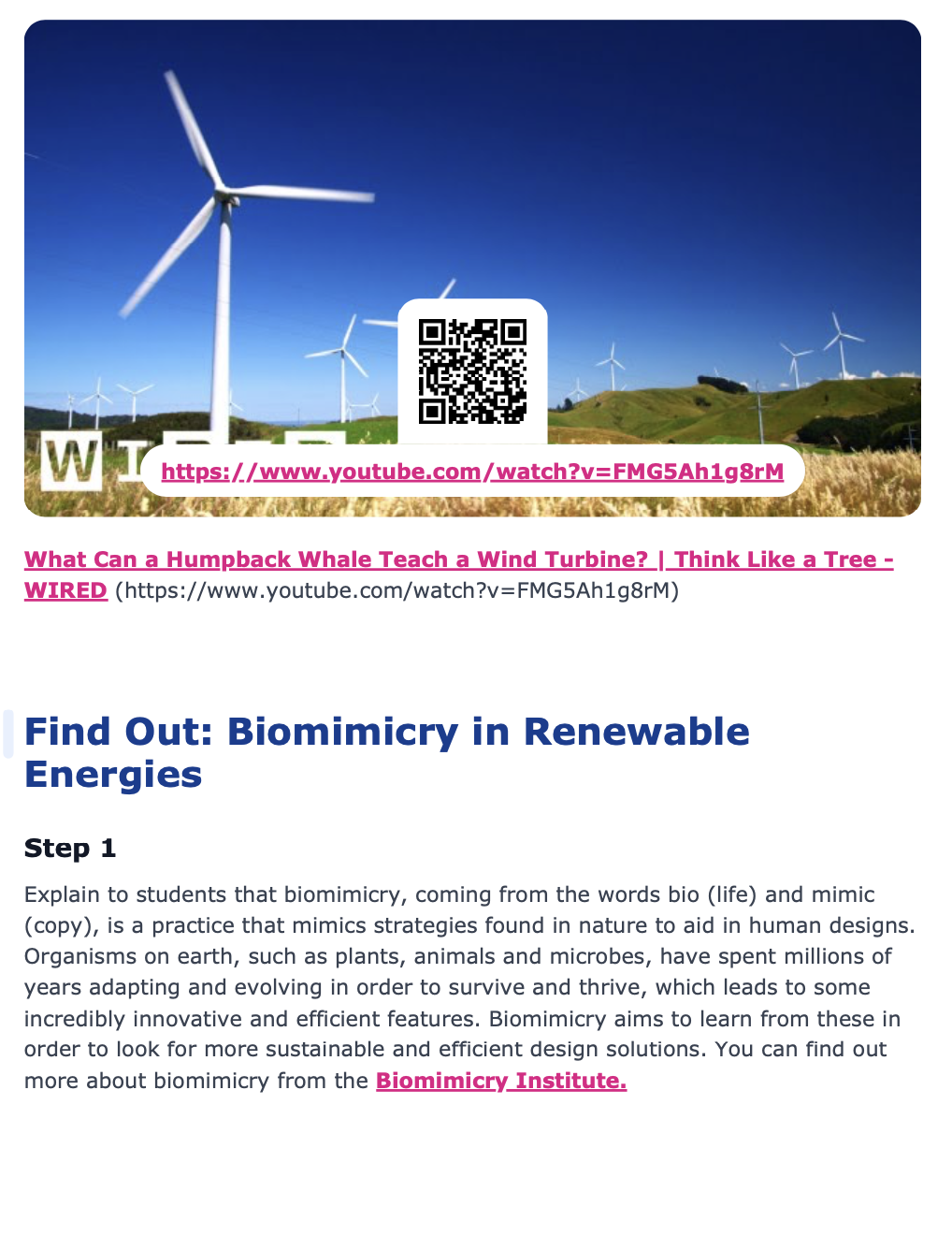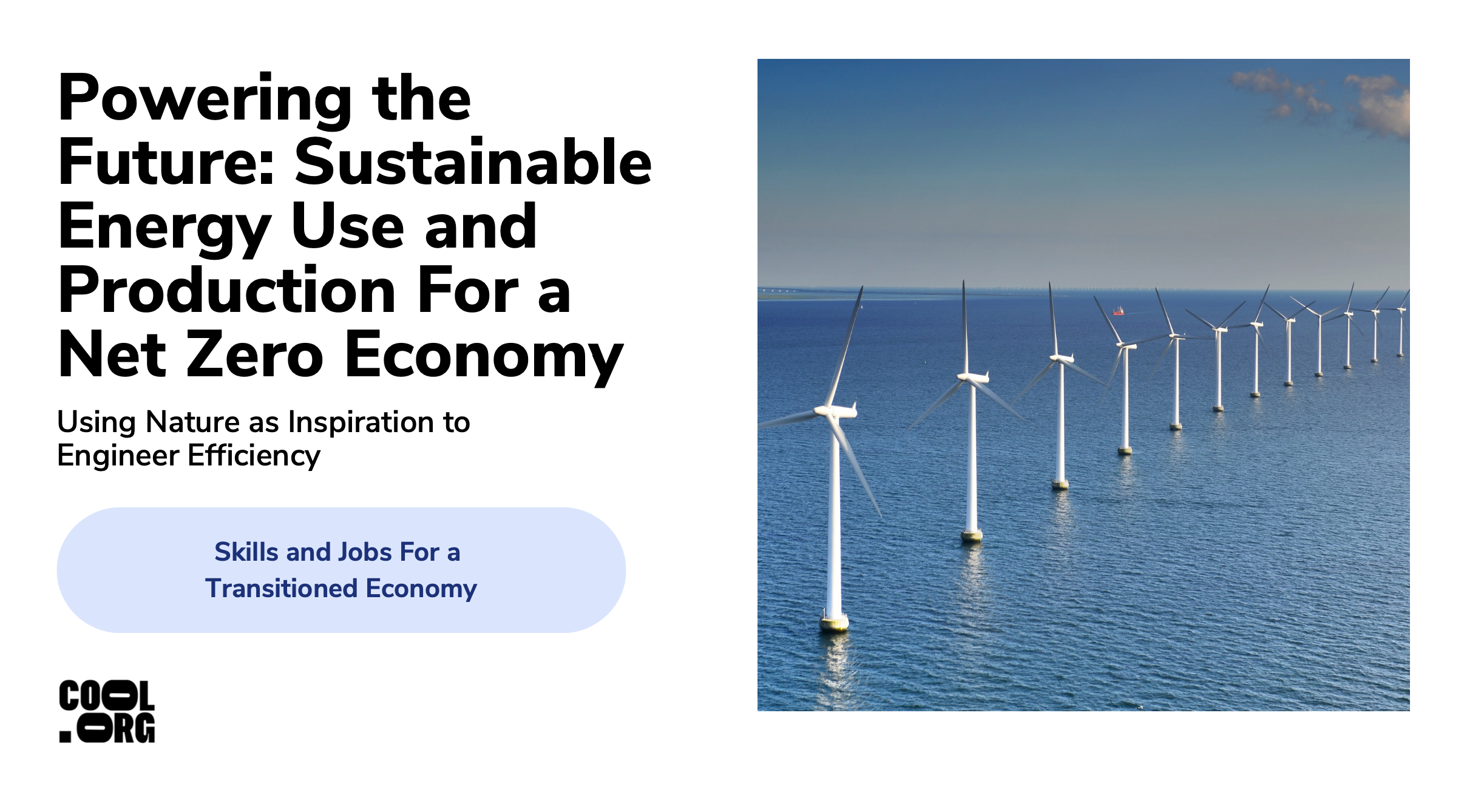Lesson summary
Students explore the concept of biomimicry in renewable energy by drawing inspiration from nature to enhance the efficiency of clean energy technologies. They analyse how features from animals like humpback whales and owls have influenced the design of wind turbines and blades and use their critical thinking skills and creativity to design their own renewable energy enhancement using inspiration from the natural environment around them.
Learning intentions:
Students will...
- understand the concept of biomimicry and its use in designing more efficient energy generation technologies, as well as design an improvement to a renewable energy technology based on their observations of nature.
Success criteria:
Students can...
- outline energy efficiency and discuss how engineers design for the efficiency of renewable energies
- analyse current innovations in the design of renewable energy technologies based on biomimicry
- design their own energy-efficient function for a renewable energy technology.
Lesson guides and printables
Curriculum links
Select your curriculum from the options below.
Lesson details
Skills
This lesson is designed to build students’ competencies in the following skills:
- critical thinking
- collaboration
- communication
- global citizenship
- problem-solving
Curriculum Mapping
Australian Curriculum (v9.0) content description: Year 9 Physics
- Apply the law of conservation of energy to analyse system efficiency in terms of energy inputs, outputs, transfers and transformations AC9S9U05
General capabilities: Critical and Creative Thinking, Personal and Social Capability
Syllabus outcomes: Stage 5: PW3
Cross-curriculum priority: Sustainability
Relevant parts of Year 9 Physics achievement standards: Students can analyse energy conservation in simple systems and apply wave and particle models to describe energy transfer and analyse the different ways in which science and society are interconnected.
UN Sustainable Development Goals
UN SDG 7: Affordable and clean energy
- 7.2 By 2030, increase substantially the share of renewable energy in the global energy mix.
- 7.3 By 2030, double the global rate of improvement in energy efficiency.
- 7.A By 2030, enhance international cooperation to facilitate access to clean energy research and technology, including renewable energy, energy efficiency and advanced and cleaner fossil-fuel technology, and promote investment in energy infrastructure and clean energy technology.
Resources Required
- Device capable of presenting audiovisual material
- Student devices for research
Additional Info
This unit of lessons, along with the other units in the Skills and Jobs For a Transitioned Economy package, aims to teach students how to be climate solution entrepreneurs. These lessons will equip students with the relevant skills and knowledge of jobs and career pathways that will be able to sustain our economy once it has transitioned away from fossil fuels. Cool.org thanks our philanthropic partners, the Lord Mayor’s Charitable Foundation and Boundless Earth, for their generous contributions in helping us to create these resources.
Level of teacher scaffolding: Medium – some explicit teaching required, facilitation of research and discussion




Welcome back!
Don't have an account yet?
Log in with:
Create your free Cool.org account.
Many of our resources are free, with an option to upgrade to Cool+ for premium content.
Already have an account?
Sign up with:
By signing up you accept Cool.org's Terms and Conditions(Opens in new tab) and Privacy Policy(Opens in new tab).